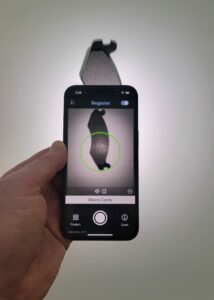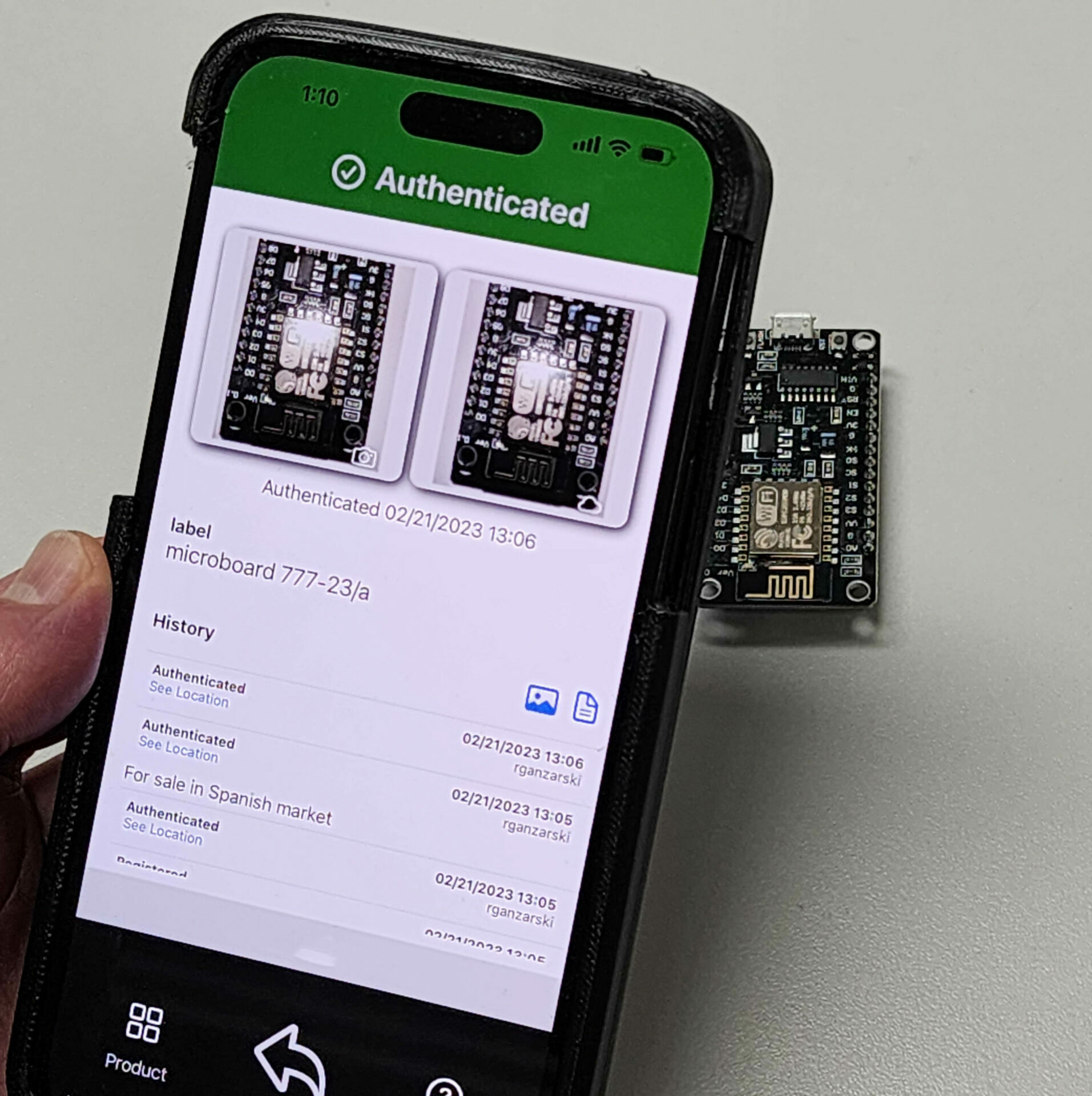
New app promises OEM part authentication for use of safe parts
By onAnnouncements
A new app could help collision repairers and consumers identify “gray market” parts that could pose safety and liability risks to vehicle owners as an extra safety step before using them.
Gray market refers to parts that are OEM-authentic but failed quality assurance tests and shouldn’t have made it to market, or meet safety standards of one geographic region but not in others, such as those meant for India that ended up in the U.S. or vice versa.
Alitheon CEO Roei Ganzarski explained to Repairer Driven News that his company’s FeaturePrint app can authenticate OEM parts that are meant for specific markets and come with manufacturer warranties, as real parts sold by OEMs are supposed to.
Gray market parts, Ganzarski said, “were sold by someone else, usually in a cheap market. [Or] a bad actor picked those up somehow from the trash, from the recycling, from wherever they’re supposed to be destroyed and is now selling them as if they are real and passed quality assurance. They’re not counterfeit. They’re just parts that have failed. …The challenge with gray markets is these are real parts so most anti-counterfeit types of solutions don’t work because these aren’t counterfeits.”
Typically, in the collision industry gray market parts are counterfeits such as an issue Nissan had in 2018 with fake parts making their way into the U.S. from Oman. In August, Mercedes-Benz warned of a global rise in fake parts based on 2021 data when 1.86 million counterfeit products were seized in more than 650 customs and law enforcement raids that year alone.
In October, Ford filed a federal trademark infringement suit against four companies that it claimed distributed, advertised, and sold thousands of counterfeit truck grilles and other parts over the previous two years, and possibly longer, as part of a “significant global counterfeiting operation.”
Ensuring part authenticity could avoid shop liability if gray market parts are used in repairs unbeknownst to the shop and lead to a future collision or issue.
FeaturePrint finds identifiers through an algorithm that are like digital fingerprints and are unique to each part avoiding the risk of barcodes, stickers, QR code stickers, RFID tags, or embedded serial numbers falling off, wearing off, or getting scratched off. It also makes it evident if a sticker or tag was removed from an OEM-sold part and put on a fake product, Ganzarski said.
“The manufacturer just takes a picture of the items that they manufacture off the production line… then when it gets to the service center, the inventory area of the distribution center, or even the end-user, as I’m about to install a brake pad or about to install a battery pack into a car, I could take a picture with my phone and then it tells me, yes, this battery pack, this computer board, this brake pad was in fact made by this company on this machine on this date.”
Ganzarski couldn’t share with RDN which OEMs are using FeaturePrint but said there are a few doing so. The product only recently went to market after Alitheon received its most recent investment in October, led by BMW.
“When it comes to safety and quality that leads to safety — when you look at automotive, aviation, pharma, medical — we should be in a zero trust environment,” Ganzarski said. “It’s too easy to say, ‘Oh, I trust what you’re sending me. Then, God forbid, there’s an accident and people get killed and it’s like, ‘Oh, how did I not think of checking? It should be the opposite. Check just to make sure because people’s lives are at stake… when you’re buying a brake pad or a seat belt or an air bag or a battery pack or a computer board that runs your cruise control — you need to make sure those are real.
“I think it’s the responsibility of every aspect of the value chain of automotive be it the manufacturer, the supplier, the repair shop, the collision shop; any one of them, when they release a car back to its driver, they should be sure that the parts that they put on or inspected are in fact real.”
There is little to no cost to use the app and for OEMs only costs pennies to dollars depending on the value of the part (a higher priced part means higher FeaturePrint cost). Ganzarski likened it to insurance for OEMs to make sure their authentic parts arrive in the appropriate markets and that QA-failed parts don’t.
If a repairer tries checking for a part through the app that isn’t registered by an OEM FeaturePrint will say it has no information on the part.
Images
Featured image: Alitheon’s FeaturePrint app is used to authenticate a brake pad. (Credit: Alitheon)
The FeaturePrint app authenticates a vehicle chip. (Credit: Alitheon)
Alitheon logo (Credit: Alitheon)

